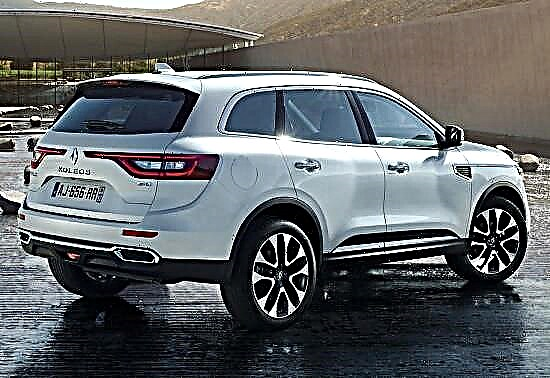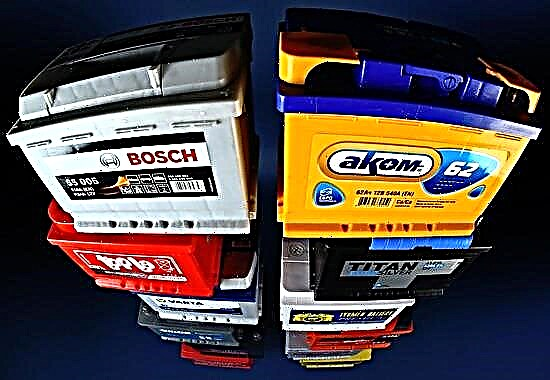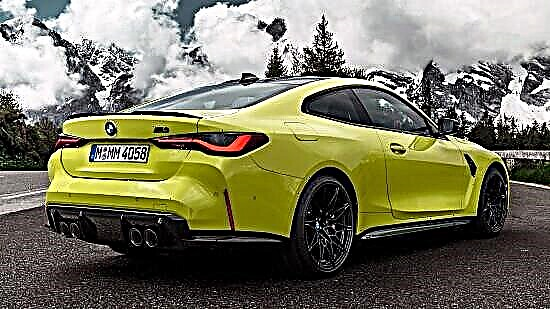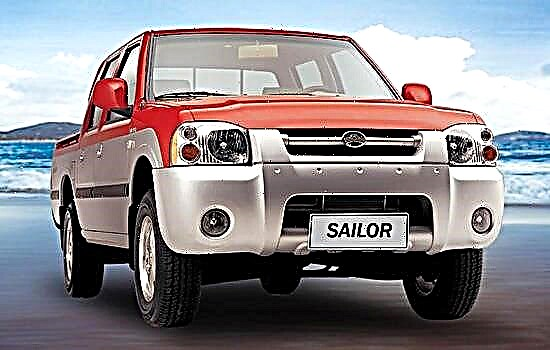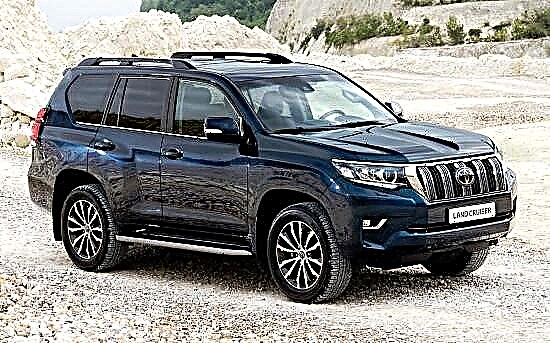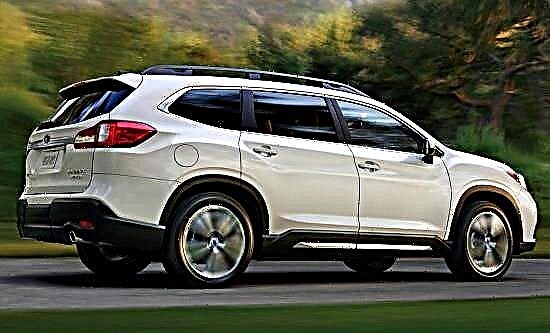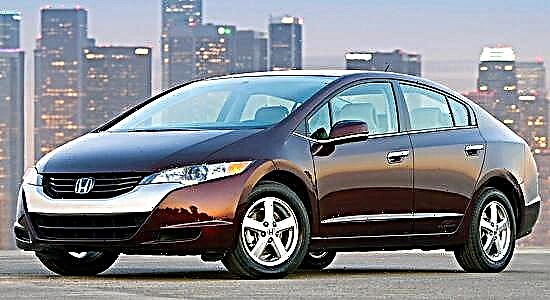The turbulent history of the world auto industry began at the beginning of the last century and we can say that it developed in segments from one bright event to another, which almost completely changed the course of history. These events were cars that appeared on the world stage like a bolt from the blue, delighting a large public or bringing something new, revolutionary, completely changing the balance of power in the market to the automotive industry. What kind of cars are these and what is their invaluable merit? We will talk about this further.
It should start with the very origins of the birth of the automotive industry. However, we will not mention the very first vehicles that did without live horses, because the piece production of the late 19th century can hardly be called an industry, even though by the standards of that time, even this was an impressive step forward. Let's talk better about a slightly later period, or rather about 1908, when the famous Ford Model T, produced up to 1927. What is so remarkable about this car?

First of all, it is to him that the world auto industry is grateful for the appearance of the conveyor, which made it possible to turn a car "from a luxury into a means of transportation." Before the Ford Model T (or, in the popular way, "Tin Lizzie"), all vehicle production was carried out in the manual assembly mode, which significantly increased the cost of the finished car and limited the scale of production. The newly invented Ford Model T conveyor literally "put America on wheels", thanks to its availability and mass scale, sold over the years of release with a circulation of more than 15 million copies. It is also worth noting that the Ford Model T became the first global car on the world market, because its production was opened not only in the USA, but also in the UK, Germany, France, Australia and other countries.
It is also difficult to imagine modern roads and numerous auto shows without eye-catching supercars, captivating not so much with their catchy appearance as with the power of engines and high-speed capabilities. But which car can be called the first-born in this class? Without a doubt, this is Hispano-Suiza H6, the car is fast, beautiful and quite expensive by the standards of its time.

The first supercar in history appeared (though it was not called that at that time) in 1919 and boasted a completely duralumin 6-cylinder in-line gasoline power unit with a displacement of 6.6 liters and a return of about 135 hp. The car was equipped with power-assisted drum brakes, a 3-speed manual transmission, had the beginnings of a streamlined racing shape in the exterior design and accelerated to 137 km / h. Later, in 1924, the Hispano-Suiza H6 received an 8.0-liter engine capable of delivering 160 hp. power, which provided the first supercar in history to accelerate to 177 km / h.
Almost simultaneously with the previous hero, the most successful racing car of the 20th century entered the arena of world automotive history Bugatti Type 35, thanks to which millions of fans around the world fell in love with motorsport, and competitors were forced to get involved in the eternal confrontation between power and speed.

The first Bugatti Type 35 appeared on the racetrack in 1924, immediately starting to win and managing to set 47 records in the first two years, winning 351 races along the way. In 1927, the most powerful modification of the Bugatti Type 35 was released, equipped with a 138-horsepower engine, which allowed it to accelerate to 210 km / h, gaining the first 100 km / h in just 6 seconds, which is quite good for a car almost 100 years old. All in all, during the participation of the Bugatti Type 35 and its successor Bugatti Type 37 in races, this car won over 1,800 victories, becoming the most productive racing car in history.
In 1922, a rather significant event took place for the world auto industry - the world's first mass-produced car with a monocoque body went into production. We are talking about a rear wheel drive open Italian car Lancia lambda, which was not only the first in history to receive a monocoque body, marking the beginning of a new era in the automotive industry, but also added a front independent spring suspension to this. What can we say, by the standards of that time, the Lancia Lambda is one of the most comfortable cars with a smooth ride and good handling from the driver's point of view.

The production of Lancia Lambda did not last long, only 9 years, but during this time the car managed to undergo 9 upgrades, as a result of which the power of its 4-cylinder V-shaped engine increased from 49 to 69 hp, and the three-speed manual transmission gave way to a more modern 4 -speed transmission.
At the dawn of the automotive industry, all cars produced were rear-wheel drive, but sooner or later the era of front-wheel drive cars was about to begin. Many people mistakenly believe that the Citroën Traction Avant, produced from 1934 to 1957, should be considered the ancestor of this trend. But this will be fair only if we consider the essence of the issue from the point of view of mass character, because the Citroën Traction Avant sold 760,000 copies, becoming the best-selling front-wheel drive car in the 40s of the last century. If you look at it from the point of view of the first appearance on the market, then the firstborn must be recognized as the American Cord L-29, which appeared in 1929, but because of the "Great Depression" faded into oblivion already in 1932.

"American" is less successful from a commercial point of view, because its production was limited to only 4400 cars, which is difficult to compare with the success of the French Citroën Traction Avant.

In any case, both of these cars have played an important role in the history of the global automotive industry, paving the way for front-wheel drive models to success.
The end of the 30s of the 20th century was marked by the appearance of perhaps the most legendary car in history - Volkswagen Käfer, also known as "Beetle". Initially, the compact and inexpensive Volkswagen Käfer was conceived as a popular German car, available to every family in Germany.

The car was developed by Ferdinand Porsche on the personal instructions of Hitler, but the mass production of the novelty began after the Second World War. At the same time, general success came to the "Beetle", which lasted for several decades, until 2003, when the legendary car was discontinued.
But Volkswagen Käfer went down in history not only due to the duration of serial production (65 years) and mass production (more than 21,500,000 copies). "Beetle" played several other important roles that made his name legendary. Firstly, it became the progenitors of the no less legendary "hippie van" VW Transporter Typ 2. Secondly, it was on the basis of the "Beetle" that a new type of racing cars was born - the buggy. And thirdly, Volkswagen Käfer formed the basis of the first Porsche 911s.
It was with Porsche 911 we will continue our journey into history. The sports car, presented in 1963, immediately fell in love with both journalists and ordinary motorists, which determined the further success of the model, which eventually caused a general interest in sports cars and forced many other automakers to develop in this direction, which had previously ignored the class of sports cars.

The classic Porsche 911 of the first and second generation (the differences are mainly in appearance) stayed afloat for an impressive 25 years, becoming the most massive and most popular sports car of the 20th century. The love of Porsche 911 fans around the world is so strong that in later versions, the manufacturer steadily retains the familiar DNA of a sports car design, and its in-house 911 index, in fact, became an exception to the rule, becoming the name of a model that has shaped an entire era around itself.
Let's go back almost 20 years ago, to the post-war 1947, which is famous in the history of the automotive industry with the appearance of the first production car with an automatic transmission. This event happened in the USA, where on Buick roadmaster installed a torque converter automatic transmission Dynaflow, which was based on technologies patented back in 1903 by the German professor Fettinger.

Initially, the automatic transmission was available as an option, but the high demand for the new product forced the manufacturer to make the automatic transmission the basic equipment of the Buick Roadmaster already in 1949, and since then the percentage of cars equipped with an automatic transmission has been growing every year.
The rapid growth in the number of cars in the post-war period, periodically accompanied by various financial and fuel crises, dictated the need to create more efficient cars, the maintenance and maintenance of which would not empty the wallets of the owners. The firstborn in this direction, which, in fact, formed a new class ("supermini") of cars, was the famous Mini Is the commercially most successful subcompact and compact car in history.

The pre-production Mini model was ready back in 1957, but official sales started only at the end of the summer of 1959 almost immediately in 100 countries of the world, which predetermined the general success of the model and ensured the growth of the popularity of small cars for many years to come. In terms of the need to understand the importance of fuel efficiency, Mini's contribution to the history of the global automotive industry is phenomenal. Moreover, the success of the Mini sparked the emergence of even more compact cars - miniature sitikars, which are gaining popularity today.
Among the many sports cars of the 70s of the last century, there is a Japanese sports car Nissan S30, also known in many markets under the name Datsun 240z.

This car did not make any global merits for the world auto industry, but it is still worth mentioning. The main success of the Nissan S30 has been in the United States, where the lower cost compared to the competition has made the sports car highly popular with mid-range buyers. The high level of sales ensured an influx of finance into the Japanese car industry, thanks to which the latter managed to get out of the post-war crisis, and today we can observe the fruits of the seeds of Japanese success, planted just in the early to mid-70s.
Our story would not be complete without Volkswagen golf the first generation, which appeared in 1974. It was he who became the progenitor of a very successful class of cars that received the name of the firstborn (golf class).

The release and success of Volkswagen Golf not only saved the German concern from economic collapse, but also marked the beginning of a new era in the global automotive industry, which resulted in a revision of the international classification of car types and contributed to the rapid growth in the popularity of compact cars. The first Volkswagen Golf was so successful that its production in third world countries continued until 2009, and this is a direct consequence of the merits in the history of the global automotive industry.
There are among the creators of automotive history and a native of Russia, or rather the USSR. We are talking about the well-known "Niva" VAZ-2121... By the end of the 70s, a certain trend had developed in the global automotive industry: SUVs were produced with a supporting frame, dependent suspension, a tent top and a Spartan interior, which was absolutely not distinguished by comfort. The Soviet "Niva" made a splash when in 1977 it appeared before the public in a completely revolutionary concept at that time: a compact monocoque body, independent front suspension, permanent all-wheel drive, lockable center differential and a comfortable passenger compartment with a good level of comfort.

Already in 1978, "Niva" received the gold medal and the title of the car of the year among off-road vehicles at an exhibition in Brno, and two years later it achieved similar success at the Poznan International Fair. In fact, Niva laid the foundations for the future class of compact SUVs, becoming a reference point for many world car manufacturers when developing their own new products. It is no secret that the VAZ-2121 was the only Soviet car exported to Japan, and up to 80% of the produced SUVs were exported to more than 100 countries of the world.
But the "American" is considered to be the father of modern crossovers (more precisely, the "SUV" segment) AMC Eaglewhich appeared in 1979. This unprepossessing car was built on the basis of the AMC Concord passenger car and was produced in sedan, coupe, hatchback, station wagon and even convertible bodies. The AMC Eagle was distinguished from other novelties of that period by the presence of an all-wheel drive chassis, on which an ordinary passenger body was actually "planted".

The original solution for its time was liked by many buyers, especially in the northern states of the USA and Canada, where the car's good cross-country ability, combined with its comfort, was appreciated. Later, the success of the AMC Eagle spurred the development of full-fledged crossovers that have become commonplace these days.
Completing the review of historical hero cars, it is worth mentioning a couple of modern models. This is primarily a hatchback Toyota Prius, who opened the world to the commercial prospects of hybrid vehicles, whose market share is steadily growing.

Well, you can't ignore another Japanese - Honda fcx, the world's first hydrogen-fueled vehicle.

Its purpose is to mark the beginning of the development of a new era in the automotive industry, in which absolutely environmentally friendly cars will prevail.
That's all, the historical excursion has come to an end, new discoveries and significant events in the field of the automotive industry await us, which means that in the future there will definitely be fresh reasons to supplement the above "list of auto history creators".

